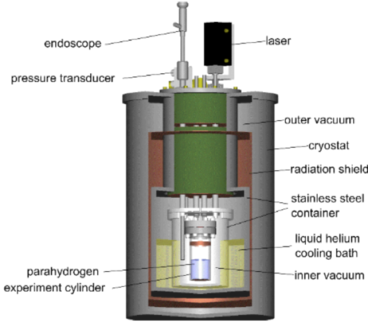Kavitation und Sieden von Methan und Wasserstoff (KASIMOFF)

research area: fluid dynamics
experiment title:
Kavitation und Sieden von Methan und Wasserstoff
experiment acronym: KASIMOFF
funding agency: DLR
grant number: 50RL1920
performing organization:
ZARM, Universität Bremen
prime investigator:
Prof. Dr. Michael Dreyer
experiment objective
abstract
Current proposals of long duration exploration space missions to Moon, Mars or beyond rely on the utilization of high energy cryogenic propellants such as liquid hydrogen or liquid methane in combination with liquid oxygen as the oxidizer. At regular conditions those substances occur in a gaseous state. To turn them into liquids it is necessary to reduce temperatures. Liquid methane has to be stored at temperatures of -160 °C (approx.. 110 K), liquid hydrogen at -250 °C (approx.. 20 K). The low temperatures of the liquids will lead to heat leaking into the propellant tank. This heat will lead to evaporation, which will in turn increase the pressure inside the tank. To keep the pressure inside the bounds venting operations will have to be performed. The goal of this project is to investigate how the propellant behaves and adjusts during these venting operations.
To further the effective utilization of cryogenic propellants, models have to be developed that can predict what happens during depressurization manoeuvres of a cryogenic propellant tank in orbit. To provide a basis for these models it is necessary to investigate the behaviour of a single nucleation site and characterize the behaviour at given thermodynamic conditions. The behaviour of the nucleation site will be studied with respect to the rate of vapour creation. This will be done for a variation of thermodynamic conditions. Those findings shall be used as a basis to develop models to predict how large scale technical systems behave during venting operations.
experiment campaigns
experiment year: 2020
number of drops: 20


 "
"